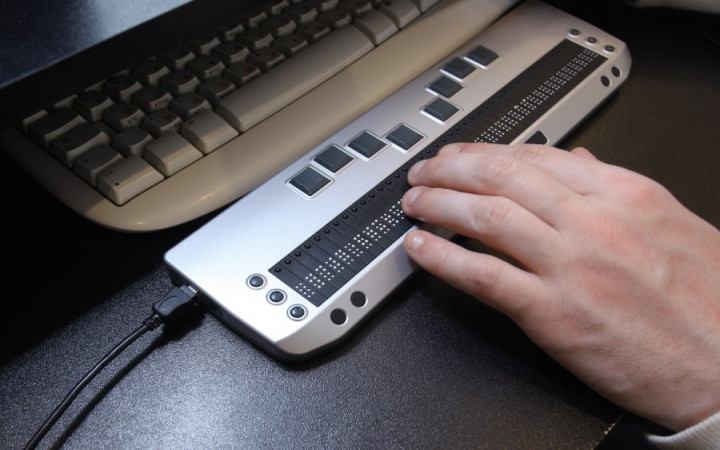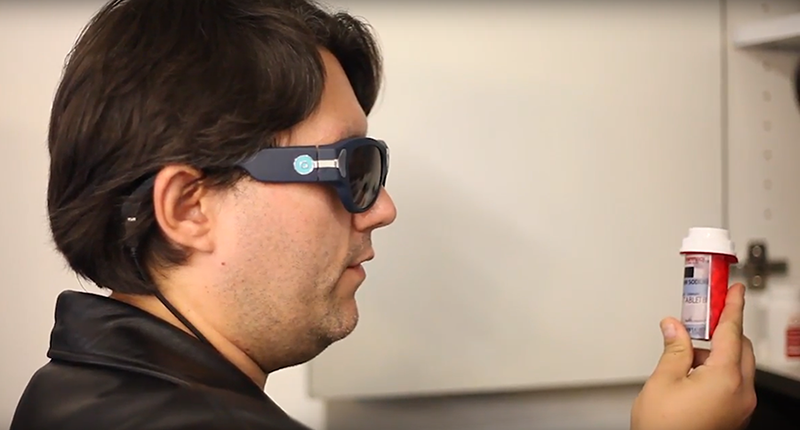Enhancing Lives With Advanced Assistive Instruments for the Blind
The combination of sophisticated assistive tools for the blind is transforming how individuals experience their environments and connect with their areas. What does this advancement suggest for the future of assistive technology and its role in equipping people?
Summary of Assistive Devices
Assistive devices for the blind incorporate a diverse series of tools and technologies made to improve freedom and improve the top quality of life for individuals with aesthetic problems. These gadgets satisfy numerous requirements, from navigation and movement to communication and everyday task monitoring.
One of the primary categories of assistive devices consists of movement help, such as white canes and overview pet dogs, which aid customers navigate their surroundings safely. Electronic travel aids, outfitted with sensors and audio comments, likewise play a substantial role in movement enhancement.
Furthermore, devices that aid with day-to-day living activities, such as adaptive cooking area tools, Braille labels, and chatting watches, encourage individuals to perform jobs independently. Communication help, including display readers and Braille display screens, promote access to information and enable individuals to involve successfully with the electronic world.
Furthermore, low-tech solutions like multiplying glasses and large-print materials stay essential for lots of individuals. Collectively, these assistive devices offer not just as practical tools but also as essential enablers of freedom, promoting higher participation in a globe that frequently prioritizes sighted experiences. Their combination right into day-to-day life is crucial for advertising inclusivity and improving total well-being for those with aesthetic problems.
Cutting-edge Technologies in Usage
Development in modern technology has significantly transformed the landscape of tools available for individuals with visual impairments. Among the most notable improvements are clever glasses integrated with augmented reality, which supply real-time navigation assistance and object acknowledgment. These devices take advantage of advanced video cameras and expert system to supply auditory cues, boosting the individual's spatial awareness and autonomy.
In addition, mobile applications have actually become effective resources, enabling individuals to determine currency, reviewed text out loud, and navigate strange environments with verbal directions. Tools such as Braille display screens and refreshable Braille tools proceed to develop, using seamless connection with computers and smartphones, thus boosting interaction and access to information.
Wearable modern technology, including smartwatches geared up with voice-activated functions, further empowers individuals by facilitating fast accessibility to alerts and notifies without calling for visual interaction. Responsive maps and 3D printing are likewise gaining grip, offering tangible representations of spaces that aid in positioning and wheelchair training.
Jointly, these innovative technologies not just enhance the every day lives of aesthetically impaired individuals but additionally foster higher freedom, inclusivity, and engagement with the wider neighborhood, therefore reshaping perceptions of accessibility. (OCR devices for the blind)
Personal Stories of Empowerment
Empowerment typically arises from individual experiences that highlight the transformative influence of innovation on individuals with visual problems. Take, for example, the tale of Sarah, a young musician that regained her enthusiasm for paint with making use of a wise walking stick outfitted with barrier detection. This tool not only facilitated her flexibility yet instilled a newly found confidence, allowing her to navigate public areas separately and pursue her imaginative endeavors.

These narratives emphasize the extensive effects that advanced assistive tools can have on day-to-day live. By allowing people to get rid of walk in vision exam near me obstacles, technology promotes a sense of freedom and self-regard. Such empowerment tales serve as a testimony to the potential of development, illustrating just how the right tools can considerably enhance high quality of life and open doors to brand-new opportunities for those with visual problems.
Benefits of Advanced Solutions
The assimilation of sophisticated innovation right into assistive tools substantially changes everyday experiences for those influenced by vision loss. AI-powered visual aids. Gadgets such as wise walking canes geared up with sensing units, navigation apps, and wearable technology are made to give real-time feedback, enhancing spatial recognition and lowering the risks associated with wheelchair.
In addition, advanced assistive innovations cultivate social incorporation by helping with communication and communication. Voice-activated devices and applications permit individuals to gain access to details and involve with their environments independently, breaking barriers that previously prevented their engagement in educational, professional, and social setups.
On top of that, the modification and adaptability of these remedies satisfy the varied requirements of customers, consequently boosting their overall high quality of life. Improved performance, such as things recognition and text-to-speech capabilities, equips individuals with aesthetic impairments to execute tasks that they may have as soon as discovered testing. Eventually, advanced assistive modern technologies not just enhance freedom and safety and security but additionally advertise dignity and self-regard, enabling individuals to lead satisfying lives.
Future Trends in Assistive Tech
As innovation remains to advance, the landscape of assistive gadgets for the blind is positioned for remarkable innovations that will certainly additionally boost accessibility and independence. Emerging trends in assistive innovation suggest a change towards raised integration of expert important source system (AI) and machine knowing, allowing devices to adapt to specific customer requires in real-time. These innovations are expected to facilitate more intuitive navigating systems that can recognize challenges and supply audio responses, dramatically enhancing exterior flexibility.
Additionally, the growth of wearable technology, such as smart glasses outfitted with augmented reality, will permit customers to receive contextual details regarding their surroundings, thereby improving their spatial recognition. Advancements in haptic modern technology guarantee find out to develop responsive feedback devices, permitting individuals to perceive information with touch, enhancing learning and communication with their atmosphere.
Telecommunication developments are additionally leading the way for remote support remedies, where experienced experts can give advice using video telephone calls, ensuring support is readily available. As these fads unfold, the future of assistive tools for the blind will unquestionably foster better autonomy, encouraging people to browse their world with self-confidence and simplicity.

Final Thought
The combination of advanced assistive gadgets for the blind stands for a substantial development in cultivating self-reliance and enhancing quality of life. By utilizing innovative modern technologies, these tools encourage individuals to navigate their atmospheres with greater self-confidence and autonomy. As the area remains to advance, ongoing study and advancement will likely produce much more sophisticated services, further changing the lived experiences of individuals with visual problems and promoting a greater sense of incorporation within society.
The integration of advanced assistive gadgets for the blind is transforming just how people experience their environments and interact with their neighborhoods. The assimilation of cutting-edge modern technology into assistive gadgets considerably changes everyday experiences for those impacted by vision loss.As technology proceeds to evolve, the landscape of assistive gadgets for the blind is poised for amazing advancements that will certainly additionally improve access and freedom. Arising trends in assistive technology show a change towards boosted assimilation of artificial knowledge (AI) and maker learning, making it possible for gadgets to adapt to specific customer needs in real-time.The combination of sophisticated assistive gadgets for the blind stands for a substantial development in fostering freedom and enhancing top quality of life.